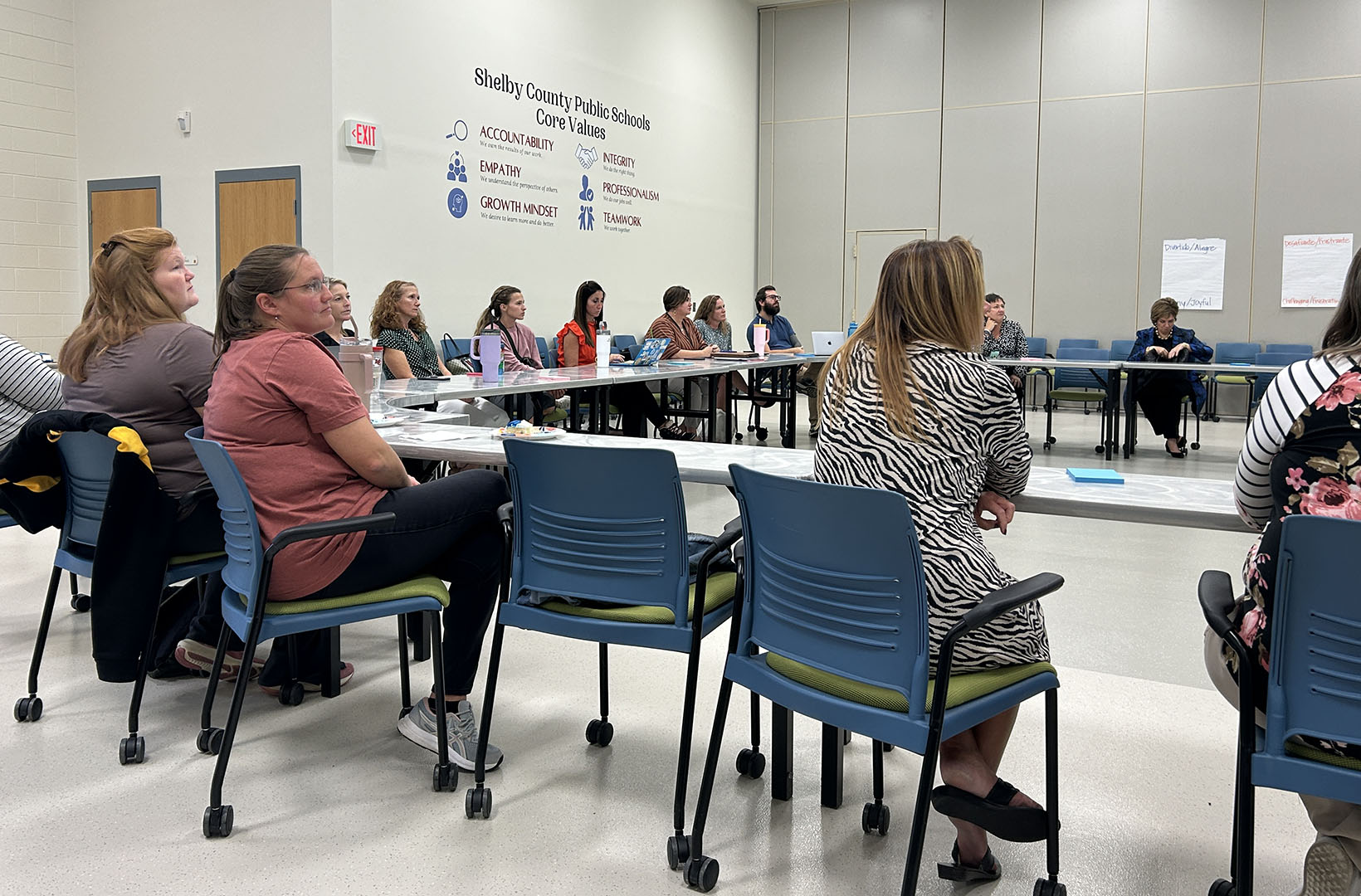This article is the fourth in a series of seven that focus on the core practices of world languages instruction. This series will try to open a window for world languages teachers, nontraditional world languages teachers and other educators as to what world languages education is about. The series will focus on two goals: to grow new leaders in the language learning profession, and to foster growth in students and teachers through effective instructional practices in language teaching.
Read the series:
- World languages: Strengthen your core!
- Core practices: Using the target language as the vehicle and content of learning
- Core practices: Fostering interpersonal communication
- Core practices: Teach grammar as a concept and use it in context
- Core practices: Using authentic texts and resources
- Core practices: Provide feedback to improve learner performance
By Kathy Shelton
kathleen.shelton@education.ohio.gov
“But how do I implement all this?!”
This is the most common question I hear from teachers during professional development workshops on making the shift to a proficiency-based curriculum. It’s a fair question when looking at everything that is involved in teaching language for proficiency. The transition can appear so overwhelming that it may unintentionally cause teachers, who are already inundated with work, to not even attempt to try something new or different.
In teacher workshops, we focus on the process of Backward Design, a framework developed by Jay McTighe and Grant Wiggins. Backward design means planning instruction with the end goals in mind. The Vanderbilt University Center for Teaching has a concise overview of the backward design.
This frameworks helps teachers implement a proficiency-based language program over a realistic timeline, based on each teacher’s current program model. When using backward design to create world language units with functional goals and objectives, the process can be broken down into three steps. The sample unit outlined below, created using backward design, can be found in its on the World Language Resident Educations website (see No. 2 under the PRINT icon). This unit integrates career connections to show students how knowing another language and culture can benefit them in their career choice.
Identify Learning Outcomes
Before you, the teacher, plan what to teach, you must first determine the learning goals or outcomes for the unit. There are several components to consider when determining learning outcomes – your state standards, the proficiency level of your students, the unit’s theme and essential questions, and relevant can-do statements. The outcomes are framed in a real-world or authentic context.
Unit Theme: Communication and Media
Essential Questions: How does culture affect what people buy? How do I make a product appealing to people in the target culture? How does knowledge of effective advertising connect to a career?
Learning Outcomes: I can identify, discuss and compare the characteristics of effective advertising in my own and other cultures. I can create an ad to market a product in the target culture.
Determine Acceptable Evidence
In this step, you determine what assessments will be given to show evidence that students have understood and achieved the learning outcomes of the unit. For world language teachers, a summative Integrated Performance Assessment (IPA) scored with rubrics is recommended, as an IPA encompasses authentic resources and performance tasks across the interpretive, interpersonal and presentational modes of communication, which are the foundation of many states’ world language standards.
IPA Framework: Students will use authentic video and print advertisements from the target culture to identify characteristics of marketing strategies and evaluate the effectiveness of the ads. They will then discuss the ads in small groups, focusing on the ads’ appeal, what would they change and why, how would the ad be marketed differently in the U.S., etc. Finally, within the scenario of working for a U.S. company trying to extend its overseas market, students will create an ad for a current or new U.S. product to be marketed in the target culture.
Plan Learning Experiences
The final step is to plan instructional activities that will help the students achieve the goals of the unit. By knowing in advance the learning outcomes and the evidence needed for the unit, you can target your activities in a more relevant and effective way. The unit’s learning outcomes and evidence inform the content you teach and the activities you create.
This allows you to focus more closely on the appropriate functional language and intercultural content, as well as related teaching and learning strategies such as accessing prior knowledge and higher-order thinking skills, teaching vocabulary and grammar in context, and integrating technology.
The entire range of activities for this sample unit can be accessed here. Below are some examples from this unit:
- Prior Knowledge: What are some strategies that advertisers use to entice people to buy their product? Which strategies are the most/least effective in your opinion?
- Language Functions: Compare and contrast; persuade; analyze and explain; summarize; create a tagline.
- Contextualized Vocabulary and Grammar: Words and phrases related to advertising; expressions of opinion, agreement, disagreement; imperative verb forms; comparatives and superlatives.
Transitioning to a proficiency-based language program can be a daunting undertaking. Using the principles of Backward Design allows teachers to follow a structured format when designing units, lessons and tasks that have functional goals and objectives.
For more ideas and templates on unit design, please consider these resources:
- Ohio Department of Education’s Model Curriculum
- Langtalks.org – Videos – “Functional Goals and Objectives” by Greta Lundgaard, the world languages curriculum coordinator in the Plano (Texas) Independent School District.
Kathy Shelton is the world language education program specialist at the Ohio Department of Education and is the technology coordinator for the National Council of State Supervisors for Languages (NCSSFL). She leads professional development for world language teachers at the state, regional and national level, covering topics such as proficiency, authentic resources, target language, rubrics and best practices for instruction and assessment. She currently serves as the co-chair of the NCSSFL-ACTFL task force revising the Can-Do statements for language, and serves on the NCSSFL-ACTFL committees creating Can-Do statements for intercultural communication and for American Sign Language. Prior to coming to the Ohio Department of Education, Shelton taught French for 25 years in public, private and online schools, as well as at the university level while completing her master’s in French language and literature.



Leave A Comment